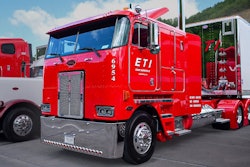There is a way to go hunting in America that can take you back in time.
Ranchers – and Indian tribes – are revitalizing the American buffalo herd. Some ranches have no season, some hunt from fall into winter. Licenses are often unnecessary, but in some cases government fees may be levied. Hunt prices also range from about $1,500 to about $5,000 depending on the type of hunt. Today, the buffalo population in the United States and Canada has climbed to more than 350,000. That the highest herd number in more than a century, and an amazing rebound considering that only 1,024 buffalo survived the slaughter that killed as many as 70 million buffalo when American expanded west in the late 1800s.
A common prize is a trophy bull that has been retired from his job as a breeder, but some hunts aim at younger bulls approaching the prime of their speed and power. A mature animal, from 6 to 10 years old, can easily weigh as much as 2,400 pounds, stand 61/2 feet tall and measure 12 feet long. In the mating season, his roar can be heard three miles away. They are also considered intelligent animals, curious about the world around them. They are powerful, strong, fast, agile and fiery. But be careful – they can be unpredictable and hit speeds of 30 miles per hour.

The animal’s pelt is usually said to be at its best in winter, and the meat is prime anywhere from mid-summer into the heart of winter. Legally they can only be hunted on private farms or ranch land.
In a lot of cases, only horses, four-wheel-drive vehicles or ATVs will get you close to the herd. In many cases, the guides working with you are American Indians whose ancestors hunted buffalo on the plains.
At the RimRock Ranch in Crawford, Neb., the buffalo live a lifestyle, and lifecycle, not a whole lot different than the buffalo of hundreds of years ago. A rotational grazing program provides the best natural grassland feed and helps keep pastures and the natural ecosystem healthy. Calves are not rounded up and weaned, they stay with their mothers and so the buffalo follow their natural cycles as much as possible.
The Thousand Hills Bison Ranch claims more than 62,000 unfenced acres of prime, native bison habitat in southern Colorado. Hunting out on the Thousand Hills range you’ll also see pronghorn antelope, wild horses and mule deer.
Don’t forget to log on to a good Internet search engine like www.google.com and look for a place to hunt the buffalo.
Off-Duty Destinations
Sleeping Bear Dunes National Lakeshore
This unusual national park in Michigan covers a 35-mile stretch of upper Lake Michigan’s eastern coastline, as well as the wild and windswept North and South Manitou Islands.
Hunters are welcome within the boundaries of the 75,000-acre park that is headquartered in Empire, Mich. There are also special deer hunts in the fall on North Manitou Island to control the herd and preserve the natural vegetation. A park hunting permit and a current Michigan deer hunting license are needed and you can go on two hunts a year. There are three rifle hunts, one for bow hunters and another for muzzleloaders.
Hunters get to the island by ferry, but the weather late in the year is unpredictable at times, and the National Park Service can’t guarantee it will take you over to the island the day you want to go – or that it will come get you when the timetable says. So, say park rangers, go prepared to spend another night or two until the ferry can run.
If you drop your trailer, your tractor is welcome in the park, although it may be a tight fit on some smaller back roads. This is one of those parks where the weather can change suddenly as Lake Michigan gets moody, so check it out before you go. As with all of our Off-Duty Destinations, we suggest you call ahead. Park headquarters are (231) 326-5134
How to get there:
From Michigan’s Upper Peninsular, cross the Mackinac Bridge, go south on I-75, exit on US-31 (Petoskey/Charlevoix) to the west of Traverse City, turn left on M-72 to Empire. Or you could stay on I-75 South to M-72 at Grayling and take M-72 west through Kalkaska and Traverse City to Empire. You can also reach the park from the south by M-22 from Frankfort, Manistee and Ludington. u








